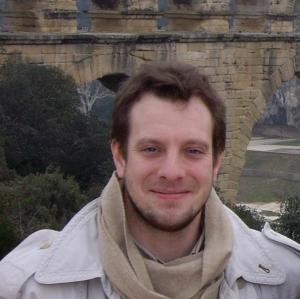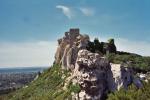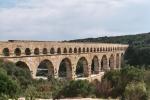LAST GUIDES VIEWED
Guide


Tours
1 : Alpilles / Luberon - 1 day2 : Le Gard / Les Bouches de Rhone - 1 day
3 : Le Vaucluse - 1 day
Imagine Tours
We provide assitance and advice to to vistors, organize or support various cultural events in the region, and equally propose personalized & cultural excursions with our volunteer guides that are designed by the visitor and that one to discover the true heart of Provence and Occitania.
Our visits are all unique and adapted to each individual or group on diverse subjects: landscapes and Heritage, Legends and Castles, Tastings at and Discoveries of the vineyards and Provençal markets, Art, literature, Crafts, Folklore and the Provençal, Occitan and Roman Cultures.
In order to achieve its mission, the association proposes services in five different areas:
1) Excursions: We organize excursions for visitors with our volunteer guides as to finance the other four activities which are no charge;
2) Assitance: We assist visitors to plan their stay and to help those who are in destress;
3) Solidarity: We help our local members and partners by providing each other out with services such as legal, printing, employment, etc.
4) Cultural: We organize, inform, finance and participate in various events during the year (festivals, our radio station ''Radio Coupo Santo, etc.);
5) Education: We inform and support educational programs that teach others about the rich history of our region, such as our new project of a bilingual (Occitan-French) school for children.
About the guide
Activities
Cultural tour guideDriver-guide
Speaking languages
English, French, Spanish, Others Activity started in
2004
Car
YESAir conditioned : YES
Baby seat : YES
Interests centers
History, Culture and language of Provence and greater Occitania.
Diploma, references, agreements
Not-for-profit Association, Supported by the Regional Provence-Alpes-Côte d'Azur Government, Partner with the Avignon, Villeneuve-Lez-Avignon, Châteaurenard and Occitan Tourist Offices, Member of the Pan-Oc Cultural Council, Recommended by Rick Steves guidebook since 2009.License or certificate (click to enlarge)

Services











Tailor-made tours, Car, Family / Children, Culture, Unusual, Festival, Fair tourism, Horse, Excursion / trekking, Bicycle, Kayak / raft











Contact
Contact - Get a quoteWeb site : www.imagine-tours.net
Address : Imagine Tours 32, route des Rémouleurs Provence - Occitanie 84000 AVIGNON FRANCE
Phone : (33) 6 89 22 19 87
Mobile : (33) 6 89 22 19 87
Fax : (33) 4 90 24 84 26
Tours
COLORADO PROVENCAL
The Colorado Provençal, or more like Mars on earth, is a site located just north of the city of Apt and outside of the town of Rustrel and is a spectacular natural site where the word “red” assumes all it’s vibrancy and where nature takes on all of its majesty.
SAINT-REMY DE PROVENCE & GLANUM
Saint-Rémy de Provence is a cute little town which has the privilege of being the birthplace of Michel de Nostredame, a.k.a. Nostradamus, as well as the location of the hospital/church Saint Paul de Mausole, which was home to Vincent van Gogh from May 1889 to May 1890 after he chopped off his ear. Adjacent to the hospital is a nice park where Van Gogh painted some of his works. Walking along the trails of the park one will find various tablets showing copies of his paintings with their histories, and then look up and see the real thing. Strolling from the park and into the woods you will find the remains of the Roman city of Glanum in a strikingly attractive landscape surrounded by the Alpilles Mountains. Just outside the ruins on the road between Saint-Rémy and Les Baux de Provence are two roman ruins called “Les Antiques” composed of a Triumphal Arch dated from around 20 A.D. and a magnificent funerary monument called the “Mausolée des Jules” dated between 30-20 B.C. in honor of an important Roman family.
LES BAUX DE PROVENCE
Les Baux de Provence sits proudly atop a promontory of rock that measures 900m long by 200m wide. The ruins of its ancient fortress testify to its once glorious past. The lords of Baux once were some of the most powerful in what is today the south of France, ruling over 79 towns and villages. The city even traces its origins to the Magi King Baltazar (hence the star of Bethlehem at the center of its coat of arms). The city remained powerful until the greed and cruelty of some of its rulers led to its downfall. The city was no stranger to sieges and its fortress was destroyed and then later rebuilt several times before 1632 when Richelieu hammered the final nail into the city’s coffin.
GORDES
This charming village, selected as one of the most beautiful in France, sits aloof on a mountain overlooking the fields of the Lubéron. It has narrow cobblestone streets which thread their way through tall houses built against the rock, clinging onto its flanks and whispering the tales of a thousand legends. An immense church and fortified castle dominate the town from high above what seems to being a cascade of roofs and stone houses. In the Roman times, Gordes was an oppidum (Latin for the main settlement in any administrative area of the Roman Empire); the tribe that lived there was that of the Vulgientes or Vordenses which gave its name to the original village; the ''V'' usually became a ''G'' (Vordenses - Gordenses) in the Gallo-Roman days.
ROUSILLON
In Rousillon, the red rock cliffs and green pine trees create a contrast of color that awakes the imagination. The buildings, new and old are all constructed from the red rock for which this area is abundant. This village, with its small paths, trails, and above all its colors, is a magical place that truly does inspire the artist in all of us.
The Colorado Provençal, or more like Mars on earth, is a site located just north of the city of Apt and outside of the town of Rustrel and is a spectacular natural site where the word “red” assumes all it’s vibrancy and where nature takes on all of its majesty.
SAINT-REMY DE PROVENCE & GLANUM
Saint-Rémy de Provence is a cute little town which has the privilege of being the birthplace of Michel de Nostredame, a.k.a. Nostradamus, as well as the location of the hospital/church Saint Paul de Mausole, which was home to Vincent van Gogh from May 1889 to May 1890 after he chopped off his ear. Adjacent to the hospital is a nice park where Van Gogh painted some of his works. Walking along the trails of the park one will find various tablets showing copies of his paintings with their histories, and then look up and see the real thing. Strolling from the park and into the woods you will find the remains of the Roman city of Glanum in a strikingly attractive landscape surrounded by the Alpilles Mountains. Just outside the ruins on the road between Saint-Rémy and Les Baux de Provence are two roman ruins called “Les Antiques” composed of a Triumphal Arch dated from around 20 A.D. and a magnificent funerary monument called the “Mausolée des Jules” dated between 30-20 B.C. in honor of an important Roman family.
LES BAUX DE PROVENCE
Les Baux de Provence sits proudly atop a promontory of rock that measures 900m long by 200m wide. The ruins of its ancient fortress testify to its once glorious past. The lords of Baux once were some of the most powerful in what is today the south of France, ruling over 79 towns and villages. The city even traces its origins to the Magi King Baltazar (hence the star of Bethlehem at the center of its coat of arms). The city remained powerful until the greed and cruelty of some of its rulers led to its downfall. The city was no stranger to sieges and its fortress was destroyed and then later rebuilt several times before 1632 when Richelieu hammered the final nail into the city’s coffin.
GORDES
This charming village, selected as one of the most beautiful in France, sits aloof on a mountain overlooking the fields of the Lubéron. It has narrow cobblestone streets which thread their way through tall houses built against the rock, clinging onto its flanks and whispering the tales of a thousand legends. An immense church and fortified castle dominate the town from high above what seems to being a cascade of roofs and stone houses. In the Roman times, Gordes was an oppidum (Latin for the main settlement in any administrative area of the Roman Empire); the tribe that lived there was that of the Vulgientes or Vordenses which gave its name to the original village; the ''V'' usually became a ''G'' (Vordenses - Gordenses) in the Gallo-Roman days.
ROUSILLON
In Rousillon, the red rock cliffs and green pine trees create a contrast of color that awakes the imagination. The buildings, new and old are all constructed from the red rock for which this area is abundant. This village, with its small paths, trails, and above all its colors, is a magical place that truly does inspire the artist in all of us.
Activities, services on this tour:




Tailor-made tours, Car, Fair tourism, Excursion / trekking




Tailor-made tours, Car, Fair tourism, Excursion / trekking
BEAUCAIRE & TARASCON
Beaucaire and Tarascon, today two quiet towns, straddle the Rhone River facing each other as do each their castles on each bank of the Rhone. This standoff is a reminder of these towns strategic importance as their location is the narrowest crossing of the Rhone in ages gone by. In Roman times, the location was that where the crossroads of the main Roman roads was located (west to Spain, North to Lyon, and East to Rome). The site would later become the border of the Kingdom of Provence (on the Tarascon side) and what would become France (where Beaucaire is found).
Christianity would take a foothold in France when Clovis, King of France, would be miraculously healed thanks to Saint Martha. Saint Martha, whose relics are found in the Church that bears her name, came up from the Les Saintes Maries de la Mer to spread the word of Christ, is credited to have tamed a horrific beast “the Tarasque” so that the villagers could kill it.
PONT DU GARD
Constructed by the Romans between 40 and 60 A.D., during the reign of the Roman Emperor Claude, the Pont du Gard is one of the greatest engineering feats of all time and is the crowning glory of the thirty-one mile long aqueduct that carried fresh spring water from the Eure river spring in the city of Uzes to the fountains and fancy thermal baths in the flourishing Roman city of Nîmes, at a rate of 20,000 cubic meters per day.
However, whenever the city was besieged, the aqueduct was always cut. Starting from the IV century the aqueduct was no longer maintained and during the IX century, the limestone deposits in the water started to block up the canal and henceforth fell victim to unrestrained pillaging, as it represented an important source of building material. During the XVIII century a road bridge was built to allow the crossing of the river.
The Pont du Gard stands 48.77 meters above the Gardon River with a length of 275 meters. It is comprised of 6 arches on its lower tier, 11 arches in the middle tier, and 35 arches at its highest tier.
ARLES, CAMARGUE, LES SAINTS MARIES DE LA MER, & AIGUES MORTES
Notable cities include : Arles, home of Vincent Van Gogh, with its Roman Arena and Amphitheatre; Aigues Mortes (Dead Waters) from the French King Louis IX (Saint Louis) constructed the launching point for his fleet of over 1500 ships to sail for Israel during the crusades; and Les Saintes Maries de la Mer (Saints Mary of the Sea) where, as local legend has it, the Jews of Jerusalem embarked from their boats with neither sail nor oar. Mary, mother of James and Mary Magdalene remanined and were buried on the site where an oratory to the virgin was constructed (now a fortress like church constructed between the 11th and 15th centuries.
Beaucaire and Tarascon, today two quiet towns, straddle the Rhone River facing each other as do each their castles on each bank of the Rhone. This standoff is a reminder of these towns strategic importance as their location is the narrowest crossing of the Rhone in ages gone by. In Roman times, the location was that where the crossroads of the main Roman roads was located (west to Spain, North to Lyon, and East to Rome). The site would later become the border of the Kingdom of Provence (on the Tarascon side) and what would become France (where Beaucaire is found).
Christianity would take a foothold in France when Clovis, King of France, would be miraculously healed thanks to Saint Martha. Saint Martha, whose relics are found in the Church that bears her name, came up from the Les Saintes Maries de la Mer to spread the word of Christ, is credited to have tamed a horrific beast “the Tarasque” so that the villagers could kill it.
PONT DU GARD
Constructed by the Romans between 40 and 60 A.D., during the reign of the Roman Emperor Claude, the Pont du Gard is one of the greatest engineering feats of all time and is the crowning glory of the thirty-one mile long aqueduct that carried fresh spring water from the Eure river spring in the city of Uzes to the fountains and fancy thermal baths in the flourishing Roman city of Nîmes, at a rate of 20,000 cubic meters per day.
However, whenever the city was besieged, the aqueduct was always cut. Starting from the IV century the aqueduct was no longer maintained and during the IX century, the limestone deposits in the water started to block up the canal and henceforth fell victim to unrestrained pillaging, as it represented an important source of building material. During the XVIII century a road bridge was built to allow the crossing of the river.
The Pont du Gard stands 48.77 meters above the Gardon River with a length of 275 meters. It is comprised of 6 arches on its lower tier, 11 arches in the middle tier, and 35 arches at its highest tier.
ARLES, CAMARGUE, LES SAINTS MARIES DE LA MER, & AIGUES MORTES
Notable cities include : Arles, home of Vincent Van Gogh, with its Roman Arena and Amphitheatre; Aigues Mortes (Dead Waters) from the French King Louis IX (Saint Louis) constructed the launching point for his fleet of over 1500 ships to sail for Israel during the crusades; and Les Saintes Maries de la Mer (Saints Mary of the Sea) where, as local legend has it, the Jews of Jerusalem embarked from their boats with neither sail nor oar. Mary, mother of James and Mary Magdalene remanined and were buried on the site where an oratory to the virgin was constructed (now a fortress like church constructed between the 11th and 15th centuries.
Activities, services on this tour:




Tailor-made tours, Car, Fair tourism, Excursion / trekking




Tailor-made tours, Car, Fair tourism, Excursion / trekking
AVIGNON
Avignon has been inhabited since neolithic times dating from around 3000 B.C. and has for centuries found itself as a crossroads for commerce, culture, and the quest for power and control. The city has a long and rich history; it had been a Celto-Ligurian capital, a Phoenician colony with its own money with its name on it, AOYE; and then it became a wealthy Romanesque city, Avenio. It was known as one of 80 cities of Gaul under the Emperor Augustus, a Latin colony under Claude, before being promoted to the grade of Roman city during the IInd century under Hadrien.
In 1309, Pope Clement V (originally from Bordeaux) came to Avignon and established the seat of the Papal Governement because of insecurity in Rome. This event brought with it a newfound prestige to the city which lasted for almost a century with 9 popes calling Avignon home.
Cultural, spiritual, economic and political capital of Christianity, Avignon became one of the most populated and wealthy cities in medieval Europe.
ORANGE
Orange has a rich history dating back to the foundation of the town as Arausio by Roman Legionnaires between 30 and 35 B.C. It was during medieval times that the counts of Orange would take center stage; as either a friend of Charlemagne liberating the city from occupation or participating in the Crusades. Orange, become a principality with a parliament and one of its princes, William III, would become King of England. The city was doted with a palace-citadel until destroyed by the French King Louis XIV. Today, it is still possible to admire the Roman Triumphal Arch (circa A.D. 19) and the best preserved ancient roman theater in the western world measuring 103 meters long and 36 meters high.
VAISON-LA-ROMAINE
Vaison-la-Romaine, is a small town that has a lot of charm and history to boot. The town is split into two parts, and linked by a two-thousand year old Roman bridge. The lower town with the modern city alongside the vast Roman ruins where the town started; and the upper medieval town where the townsfolk took refuge from marauding forces following the collapse of the Roman Empire. Today, one is enchanted with this town’s extensive Roman ruins, including an amphitheatre; the medieval city with its castle, winding cobblestone streets, and fountains make this a place unlike most. In addition, the other hillside villages in the area with their castles, bridges, and breathtaking panoramic views make this area worth visiting.
CHATEAUNEUF DU PAPE
Located between Avignon and Orange, Châteauneuf-du-Pape spreads out at the foot of the ruins of its fortress-castle. The village looks over the plain of Comtat and 3,000 hectares of vineyards. The village is almost completely dedicated to its world famous wine ''Châteaunef du Pape'' which is also part of the similarly famous Côtes du Rhône. In the XIV century Pope Jean XXII chose Châteauneuf as the location for his summer residence, and then decided to plant grapevines on the stony land which surrounded the papal retreat. The wine production remained a secret for a long time, but started to become well known in the XVIII century. It was not until 1929 though, that it was officially recognized and bestowed with its own brand “Châteauneuf-du-Pape.” This brand or “appellation” as it is called in French means that the wine production in Chateauneuf du Pape is subject to strict controls that ensure that all the vineyards produce an extremely fine wine.
L’ISLE SUR LA SORGUE
L’Isle sur la Sorgue is a wonderful little Provençal town of 18,000 inhabitants, located in the Venise Comtadine, in the heart of the modern French Department (like a County) Vaucluse. The old town, with many canals running through, has preserved a few traces of its past, thanks to a hydraulic system where water wheels are still working. However, what makes this town special is its market of provençal and antique goods each Sunday between 8:00 a.m. and noon.
FONTAINE DE VAUCLUSE
Only
Avignon has been inhabited since neolithic times dating from around 3000 B.C. and has for centuries found itself as a crossroads for commerce, culture, and the quest for power and control. The city has a long and rich history; it had been a Celto-Ligurian capital, a Phoenician colony with its own money with its name on it, AOYE; and then it became a wealthy Romanesque city, Avenio. It was known as one of 80 cities of Gaul under the Emperor Augustus, a Latin colony under Claude, before being promoted to the grade of Roman city during the IInd century under Hadrien.
In 1309, Pope Clement V (originally from Bordeaux) came to Avignon and established the seat of the Papal Governement because of insecurity in Rome. This event brought with it a newfound prestige to the city which lasted for almost a century with 9 popes calling Avignon home.
Cultural, spiritual, economic and political capital of Christianity, Avignon became one of the most populated and wealthy cities in medieval Europe.
ORANGE
Orange has a rich history dating back to the foundation of the town as Arausio by Roman Legionnaires between 30 and 35 B.C. It was during medieval times that the counts of Orange would take center stage; as either a friend of Charlemagne liberating the city from occupation or participating in the Crusades. Orange, become a principality with a parliament and one of its princes, William III, would become King of England. The city was doted with a palace-citadel until destroyed by the French King Louis XIV. Today, it is still possible to admire the Roman Triumphal Arch (circa A.D. 19) and the best preserved ancient roman theater in the western world measuring 103 meters long and 36 meters high.
VAISON-LA-ROMAINE
Vaison-la-Romaine, is a small town that has a lot of charm and history to boot. The town is split into two parts, and linked by a two-thousand year old Roman bridge. The lower town with the modern city alongside the vast Roman ruins where the town started; and the upper medieval town where the townsfolk took refuge from marauding forces following the collapse of the Roman Empire. Today, one is enchanted with this town’s extensive Roman ruins, including an amphitheatre; the medieval city with its castle, winding cobblestone streets, and fountains make this a place unlike most. In addition, the other hillside villages in the area with their castles, bridges, and breathtaking panoramic views make this area worth visiting.
CHATEAUNEUF DU PAPE
Located between Avignon and Orange, Châteauneuf-du-Pape spreads out at the foot of the ruins of its fortress-castle. The village looks over the plain of Comtat and 3,000 hectares of vineyards. The village is almost completely dedicated to its world famous wine ''Châteaunef du Pape'' which is also part of the similarly famous Côtes du Rhône. In the XIV century Pope Jean XXII chose Châteauneuf as the location for his summer residence, and then decided to plant grapevines on the stony land which surrounded the papal retreat. The wine production remained a secret for a long time, but started to become well known in the XVIII century. It was not until 1929 though, that it was officially recognized and bestowed with its own brand “Châteauneuf-du-Pape.” This brand or “appellation” as it is called in French means that the wine production in Chateauneuf du Pape is subject to strict controls that ensure that all the vineyards produce an extremely fine wine.
L’ISLE SUR LA SORGUE
L’Isle sur la Sorgue is a wonderful little Provençal town of 18,000 inhabitants, located in the Venise Comtadine, in the heart of the modern French Department (like a County) Vaucluse. The old town, with many canals running through, has preserved a few traces of its past, thanks to a hydraulic system where water wheels are still working. However, what makes this town special is its market of provençal and antique goods each Sunday between 8:00 a.m. and noon.
FONTAINE DE VAUCLUSE
Only
Activities, services on this tour:




Tailor-made tours, Car, Fair tourism, Excursion / trekking




Tailor-made tours, Car, Fair tourism, Excursion / trekking
Location
Click on the links to locate positions
 guide
guide
 Alpilles / Luberon
Alpilles / Luberon  Le Gard / Les Bouches de Rhone
Le Gard / Les Bouches de Rhone  Le Vaucluse
Le Vaucluse
 guide
guide  Alpilles / Luberon
Alpilles / Luberon  Le Gard / Les Bouches de Rhone
Le Gard / Les Bouches de Rhone  Le Vaucluse
Le Vaucluse















